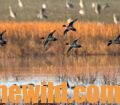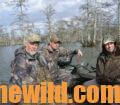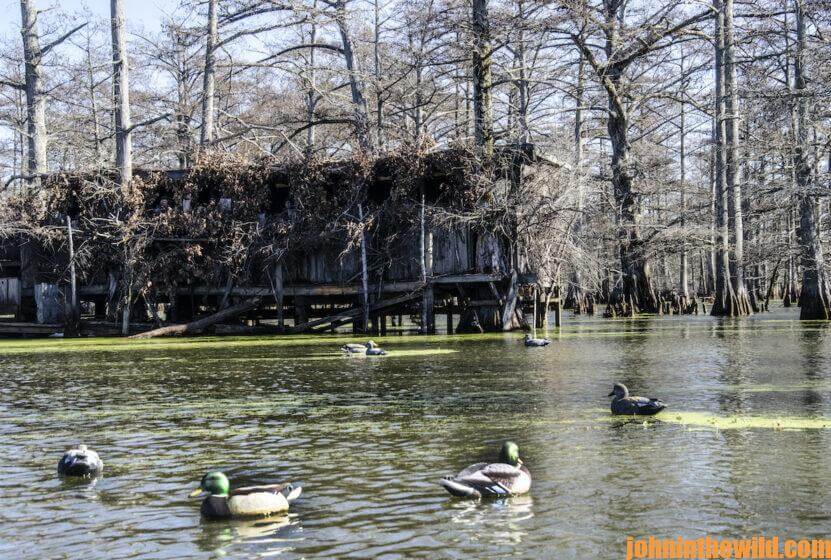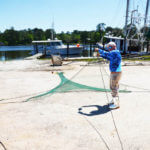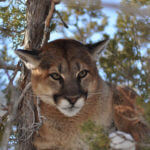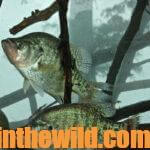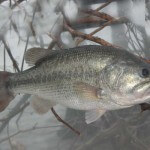Editor’s Note: Ducks have come to Beaver Dam on a 1,500-acre oxbow lake, south of Memphis, Tennessee, near Dundee and Tunica, Mississippi, 38 miles from the Mississippi River for eons. But harvesting ducks isn’t the only reason hunters flock there. More importantly, a trip to Beaver Dam is a step back into waterfowling history that enables you to go home with memories that last forever. Today, a portion of this lake is privately owned by Mike and Lamar Boyd and surrounded by corn, soybean and rice fields that draw in ducks. It’s historically been a great place to catch crappie and bass too with its 1-1/4 miles of open lake surrounded by standing cypress trees and cypress swamps on both ends of the lake. (All Live Waterfowl Photos Courtesy of George Lee Photography)
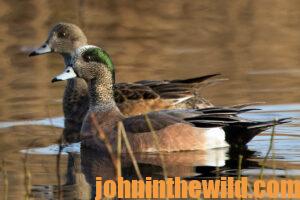 Lamar Boyd is 36-years old and is the son of Mike Boyd, who owns Beaver Dam Hunting Services (https://www.beaverdamducks.com/). “I’ve been guiding every day of duck season for 22 years here at Beaver Dam, near Tunica, Mississippi. When I was 15-years old, I got my learner’s permit to drive a car, so my dad, Mike Boyd, let me start guiding duck hunters.
Lamar Boyd is 36-years old and is the son of Mike Boyd, who owns Beaver Dam Hunting Services (https://www.beaverdamducks.com/). “I’ve been guiding every day of duck season for 22 years here at Beaver Dam, near Tunica, Mississippi. When I was 15-years old, I got my learner’s permit to drive a car, so my dad, Mike Boyd, let me start guiding duck hunters.
“I hunted with my father when I was growing up, and he taught me the basics of duck calling. However, he finally told me, ‘Son, you’re going to have to go and hunt ducks and begin to figure out what type of calling works and what doesn’t work. I learned mostly through trial and error by watching, listening, calling and learning how those ducks responded to my calling. But bringing ducks into the blind with their wings cupped and their feet down is more than just calling. The way you set-up your decoys, the type of decoys you use and your jerk string of decoys all play a role in how effective you are in bringing ducks down into your decoy spread.”
Setting Up:
Lamar Boyd mentions that, “A number of mechanical decoys and different types of devices will put ripples and waves on the water, so that your decoys look like live ducks feeding. Any time you see ducks on the water, you’ll notice that there’s ripples on the water from the ducks’ feeding activity and particularly on calm days when the water’s slick. However, I feel like five decoys tied about 4-5 feet apart with a bungee cord on one end and the other end of the string running to my calling station makes a difference in whether the ducks finish (come into your decoy spread with wings cupped feet out) or don’t come into your spread. But, you have to know when to jerk that spread and make the decoys move and when not to jerk the string. I believe that any time the ducks are high in an area and are looking at my decoy spread, they’re also looking for some kind of ripples on the water that lets them know those decoys are actually feeding ducks. However, whenever I get a flight of ducks close to my decoy spread, I want to stop jerking the spread and making them move and splash. But, I do still want there to be waves left, after I stop jerking the string.”
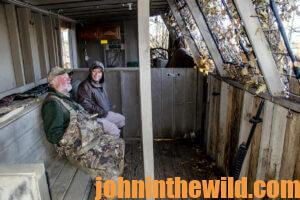 Calling Ducks:
Calling Ducks:
To be an effective caller, Lamar Boyd explains you’ve got to know more than just how to blow a duck call. “First of all, you have to know which way the wind’s blowing, and where the corners are on your blind and decoy set-up (where the ducks will turn when they hear calling if they’re going to come back). Duck calling is a push and a pull. Sometimes I want to push ducks to get them to where I want them to be in the air, and sometimes, I want to pull them to come into the blind and make them finish. At other times, I want to push ducks to get them to line-up in a certain spot where I know the wind will be right, and everything is set-up that the ducks want to see and hear to cause them to finish. Then when I get them to that spot, I want to pull them into the decoy spread. I want the ducks to feel comfortable and feel like the decoys are telling them to come on down and get something to eat. At the same time, I want to call enough, so that the ducks don’t lose their focus on the decoys. But I don’t want to over-call the ducks or call so much that I don’t really sound like ducks feeding on the water.
“My primary call is a short bell R&T (Rich and Tone) call (https://rntcalls.com/). I’ve had this single-reed call for 20 years. When I first started blowing a single-reed call, it fit the type of calling that I like to do, and I’ve never seen a reason to change it. Every hunter has a reason for why he uses the duck calls he does. I don’t believe that one call made by one manufacturer suits everyone’s needs for their calling. However, once a caller finds a call that’s working for him, he’ll usually stick with it and use it for a long time.
“I’m often asked: ‘What’s the duck that’s hardest for you to call?’ Without question, I quickly reply, ‘Gadwall.’ The gadwall is just a goofy duck. Some days gadwalls will pour into a decoy spread like pouring tea out of a pitcher, and on other days, they won’t even slow down enough to give you the time of day. I feel like when I call to mallards or wigeons, I can get inside their heads and reason with them about why they should come down and light in my decoy spread. But if a gadwall or a flight of gadwalls comes over, I don’t know whether I’ll be able to call that flight of ducks or not. There’s not consistency about what type, how much, or how little calling you can use to bring gadwalls into your decoys. I call to gadwalls pretty much like I do to mallards, and I don’t use a gadwall call. I mainly want to keep their attention on what they’re seeing and hearing. A gadwall can be circling your blind and look like it’s going to finish when it looks up, sees something further down the lake, becomes more interested in that and suddenly goes to that other place or that other calling.”
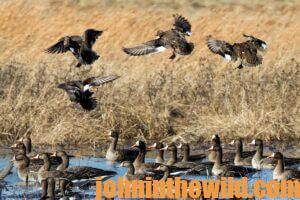
Hunting Mallards:
Beaver Dam has 10 blinds, and the primary duck is the mallard.
According to Lamar Boyd, “The real key, I think, to getting those mallards into the decoys is not to over call them. If I can keep those mallards’ attention and keep them focused on the decoys and the calling they’re hearing, then I let them become comfortable getting lower and lower until they finish. However, every flight of mallards is different. I’ve had mallards that may make 12 or more passes over the blind before they finally drop into the decoys, although that’s not really common. However, then sometimes the first time I talk to a flock of mallards they’ll drop down into the decoys.
“If the wind changes quite a bit, and when we see those wind changes, we’ll come out of our blind and move our decoys around to give the ducks a pocket that they can land in right in front of the blind. Another thing we do to make our pockets more attractive to the ducks is to use our boat and motor to push that duckweed out of the hole to give the ducks a clean pocket for landing.
“Another question I’m often asked is, ‘What decoys do you use and why?’ We’ve used
Greenhead Gear decoys for years, and because they’ve always brought ducks to us, we’ve never seen a reason to change. They’re durable, and we get good service out of them.”

Learning about the Best Day of Duck Hunting:
Lamar Boyd says his definition of a best day of duck hunting usually falls into two categories: “Everyone in the blind is taking their limit of ducks quickly; and/or we’re taking the most ducks we’ve ever taken in a day. That being said, there was one morning we killed a six-man limit in less than 30 minutes – 36 ducks in under 30 minutes. Several reasons meant we could get that many ducks in that short time: 1) We had big flights of mallards coming in – one right behind the other. 2) The hunters we had in the blind were very-good shooters – and when they squeezed the triggers on their shotguns, ducks fell. 3) We got out of our blind really quickly. 4) There was also a lot of cold, bad weather pushing ducks from north of Beaver Dam. 5) The last factor in our favor, was that a severe cold front brought the most ducks to us before the front hit or right after the front hit. Sometimes we’ll get a really-strong wind a day or two after a front comes through, and I think those ducks know if they get on that wind, they’ll get a free ride south. By that I mean: they don’t have to beat their wings as hard or fly as fast. They can ride that wind and get pushed south much faster than if there’s no wind or only a slight wind. We also can get a really- good push of ducks with a south wind, if there’s already been two or three cold fronts move through, and a good number of ducks are holding south of Beaver Dam. But, ultimately, I think if you have your blind in a really-good spot, have set-out a good decoy spread and have someone who knows how to call ducks, you can have a great day of duck hunting – whether you get a warm front or a cold front.
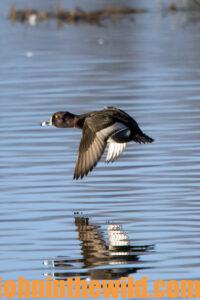
“A perfect day of duck hunting here at Beaver Dam would be: a bluebird sky and a day that’s very cold and an 8-10 mph north to northeast wind. That’s just enough wind to make the decoys move and for the ducks to set-up to come into the blind. A 15 mph wind pushes the ducks a little too hard to have a really good shoot, I think.”
Learning What People Love About Duck Hunting:
Another question often asked of Lamar Boyd is: “Since you’ve been at duck hunting almost all your life, what is it you like so much about hunting, calling, and guiding for ducks? I believe there’s two aspects of duck hunting that, at least for me, make it so enjoyable. 1) I can sit and talk with the people in the blind and get to know them and they get to know me, and 2) We can hunt at the same time.
“When I see a flight of ducks, I can start calling to them, and I like watching them work, while I’m trying to get inside their heads to know what they want to hear, and what they’re going to do. My hunters like to watch those ducks in the air also. After we shoot or if those ducks leave us, we can resume enjoying each other’s conversation. You can’t do that if you go deer hunting or with some other forms of hunting. Also, about 90% of our customers are return customers. So, after the first hunt or two, they change from being customers to being friends. And we enjoy fellowshipping with our friends, learning what’s been going on with their lives, since we’ve seen them last, and they seem to enjoy some of the stories we tell and learning too what’s been going on with our lives. Some of our customers have watched me grow up from a little fella tagging along with his dad to developing into a duck guide and caller on my own. We have a really special relationship with most of the people who hunt with us.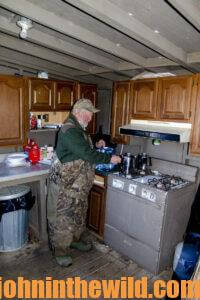
“Another reason I like guiding is because we have plenty of food for ducks in our county with rice, corn, and soybeans. The soils right next to the lake are light-colored soils that are also really good for cotton. We have some timber holes we hunt too, some fields we flood, and we probably could hunt dry ground, but we prefer to hunt on the water.”
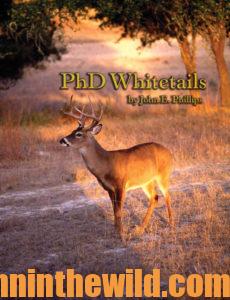 To learn more, you can visit the Boyds’ website at https://www.beaverdamducks.com/; call Mike Boyd at 662-363-6288 or email him at [email protected]; or, call Lamar Boyd at 662-910-0102 or email him at [email protected].
To learn more, you can visit the Boyds’ website at https://www.beaverdamducks.com/; call Mike Boyd at 662-363-6288 or email him at [email protected]; or, call Lamar Boyd at 662-910-0102 or email him at [email protected].
For more information about John E. Phillips’ hunting books, visit www.amazon.com/author/johnephillips. To learn more about hunting deer, check out John E. Phillips’ book, “PhD Whitetails: How to Hunt and Take the Smartest Deer on Any Property,” available in Kindle and print at http://amzn.to/WIEUoo and Audible at https://www.audible.com/pd/PhD-Whitetails-Audiobook/B08VYMWS6J. You may have to copy and paste this link into your browser. (When you click on this book, notice on the left where Amazon says you can read 10% of the book for free, and you can hear 10% for free). On the right side of the page and below the offer for a free Audible trial, you can click on Buy the Audible book. Go to
https://www.amazon.com/gp/product/B00AN7GDW4/ref=dbs_a_def_rwt_bibl_vppi_i47 to learn about John and Denise Phillips’ cookbook, available in Kindle and print, “The Best Wild Game and Seafood Cookbook” that includes an entire chapter on bird recipes, including recipes for their favorite duck dishes.
Tomorrow: Why the Boyds Hunt Ducks, Not Deer

